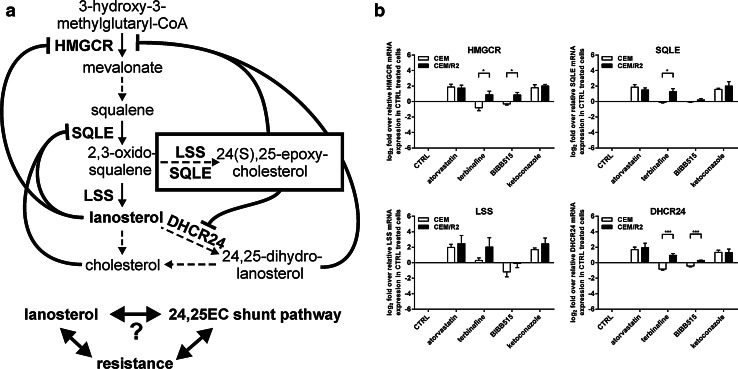Fig. 4.
Differentially regulated 24,25-EC shunt pathway in CEM/R2 cells potentially cause or effect of increased lanosterol flux. a HMGCR, the first rate-limiting step of cholesterol biosynthesis is negatively regulated by lanosterol, 24,25-dihydrolanosterol and 24,25-EC [50]. SQLE is regulated by lanosterol and cholesterol [41–45] and participates, together with LSS, in a shunt of the mevalonate pathway that produces 24,25-EC. 24,25-EC itself inhibits HMGCR [46] and DHCR24 [47]. b BIBB515 and terbinafine, acting at LSS and SQLE, respectively, induce differential expression of HMGCR, SQLE, and DHCR between CEM and CEM/R2. Cells were cultured for 24 h in presence or absence of 50 μM atorvastatin, 12.5 μM terbinafine, 12.5 μM BIBB515, or 10 μM ketoconazole in RPMI 1640 supplemented with 10 % FBS. mRNA expression levels are shown as log2 relative mRNA expression fold over vehicle-treated CEM or CEM/R2 cells, respectively. Data are shown as mean ± SEM of four independent experiments, P values were determined using an unpaired t test. *P ≤ 0.05; **P ≤ 0.01; ***P ≤ 0.001

